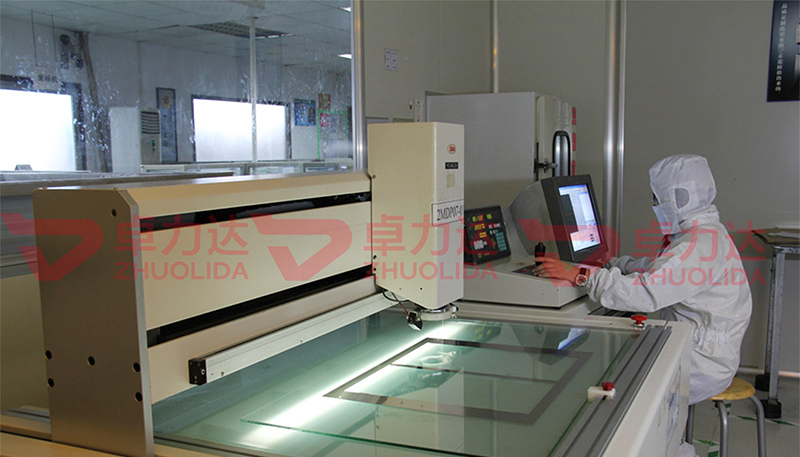
Etching cream is commonly used for creating designs on glass due to its ability to chemically "etch" or erode the surface in a controlled way, creating a frosted or matte appearance.
However, it’s typically not suitable for stainless steel or other metals. Let’s break down why that’s the case and discuss safer, more effective alternatives for etching stainless steel.
### 1. **Why Etching Cream Won’t Work on Stainless Steel**
- **Chemical Composition**: Etching cream is primarily formulated with chemicals like ammonium bifluoride and sulfuric acid, which are effective on glass and certain non-porous
surfaces. Glass is chemically different from stainless steel, which has chromium, nickel, and carbon that protect it against corrosion. These protective elements make stainless steel highly
resistant to acidic etchants.
- **Insufficient Reaction**: Even if applied directly to stainless steel, etching cream would likely not produce a visible or lasting mark. The chemical reaction that etching cream initiates
on glass is ineffective on metal because of the metal’s durability and protective oxide layer.
### 2. **Alternatives to Etching Cream for Stainless Steel**
To successfully etch stainless steel, a different approach is necessary. Here are some popular methods:
- **Electrochemical Etching**: This technique uses an electrolyte solution and an electric current to remove metal particles and create a design. It’s commonly used for marking tools, knives,
and jewelry. The process involves applying a stencil over the metal, then using an etching machine to pass an electric current through the electrolyte-soaked pad. This creates a clean,
professional-looking mark.
- **Acid Etching**: While risky for those unfamiliar with working with strong chemicals, acid etching can be done using specific acids that react with stainless steel. Ferric chloride,
commonly used for etching copper in electronics, is effective for stainless steel too. This process requires safety equipment, ventilation, and careful handling.
- **Laser Etching**: For highly precise and complex designs, laser etching is a great choice. This method involves a laser machine that vaporizes the metal surface, creating detailed marks.
Laser etching machines are expensive but are often available through commercial services that allow you to submit custom designs.
- **Sandblasting**: Using sand or other abrasive media to "blast" away parts of the stainless steel can create a textured or frosted effect. This process requires a sandblasting machine and
safety equipment but can be ideal for creating larger patterns or rough textures.
### 3. **Detailed Steps for Electrochemical Etching**
Electrochemical etching is one of the more accessible and reliable methods for creating detailed, permanent designs on stainless steel. Here’s a step-by-step guide on how to do it safely
and effectively.
1. **Gather Supplies**:
- Stainless steel item to be etched
- Electrolyte solution (often sold specifically for etching)
- Stencil (vinyl or adhesive-backed for precision)
- Etching machine or a low-voltage DC power source
- Safety gloves, eye protection, and a workspace with ventilation
2. **Prepare the Surface**: Clean the stainless steel thoroughly to remove any oil or debris. A clean surface ensures the etching will be even and precise.
3. **Apply the Stencil**: Secure your stencil over the area to be etched. The stencil acts as a mask, protecting the areas you don’t want etched and creating the design for the electrical current
to pass through.
4. **Set Up the Etching Machine**: Dip an applicator pad in the electrolyte solution, then connect it to the machine’s negative lead. Connect the machine’s positive lead to the metal.
For DIY setups, a simple DC power supply of around 12-24 volts can work.
5. **Etch the Design**: Place the electrolyte-soaked pad over the stencil area and turn on the power. The current will cause a chemical reaction, etching the exposed
metal through the stencil.
6. **Clean and Finish**: Once done, wash the stainless steel thoroughly to remove any residue. Remove the stencil and admire your etched design.
Finish with a polish or sealant, if desired.
### 4. **Safety Considerations**
- **Protective Gear**: Electrochemical and acid etching both require gloves, goggles, and proper ventilation to avoid skin contact or inhalation of fumes.
- **Ventilation**: Acid etching, in particular, releases fumes that can be harmful if inhaled. Always work in a well-ventilated space or outdoors.
- **Disposal**: Used electrolyte or acid solutions must be disposed of responsibly, as they are hazardous to the environment. Check local guidelines on proper disposal.
### 5. **Additional Tips for Successful Stainless steel etching**
- **Experiment on Scrap Metal**: If you’re new to etching, start with a test on scrap stainless steel to practice technique and get a feel for timing and application.
- **Use High-Quality Stencils**: For intricate designs, invest in a durable stencil material to prevent the etchant from seeping under the edges.
- **Consider Professional Help**: If you need a particularly detailed or large design, many professional metal etching or laser engraving services can
achieve precision that’s difficult to replicate with home methods.
### 6. **Common Applications for Etching Stainless Steel**
- **Personalized Items**: Many people use stainless steel etching to personalize items like flasks, knives, or watches. Etching names, initials, or small
images makes gifts unique and meaningful.
- **Industrial Uses**: Electrochemical etching is frequently used to mark tools, machine parts, and surgical instruments. These markings are durable
and can include details like serial numbers or barcodes.
- **Decorative Art and Jewelry**: Acid or laser etching enables intricate designs on jewelry, creating patterns that would otherwise be hard to achieve by other means.
### 7. **Conclusion**
While etching cream is a great solution for glass, it doesn’t work on stainless steel. Instead, consider methods like electrochemical or acid etching,
laser etching, or sandblasting. Each approach offers unique advantages, with electrochemical etching and laser etching being particularly well-suited for
precision and durability. With the proper preparation, materials, and attention to safety, you can achieve stunning, lasting designs on stainless steel that are both functional and beautiful.
Contact: andy_Lai
Phone: 18938693450
E-mail: yw9@zldsmt.com
Add: Building A3, Huafa Industrial Park, Fuyong Town, Fuyuan Road, Fuyong Town, Baoan District, Shenzhen,China